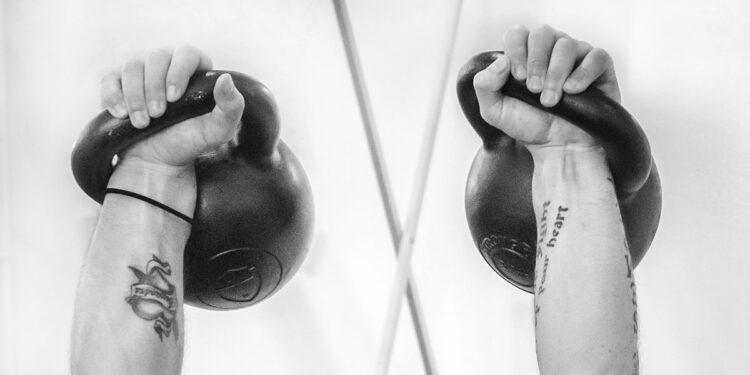For over a decade at StrongFirst we’ve got suggested in opposition to pushing units to failure and advocated in the direction of all the time retaining a number of reps “within the tank.”
In recent times we’ve got heard an increasing number of typically from well-known power coaches, and on the internet, in regards to the Fee of Perceived Exertion (RPE) and Reps in Reserve (RIR).
It looks like many are lastly coming to the conclusions we got here to a very long time in the past. Actually, these are the conclusions that many Soviet sports activities scientists reached within the late 1900s, which we’ve got endorsed and applied in our system.
RPE and RIR
However what are RPE and RIR all about?
RPE is a subjective measure of effort, incessantly measured on a scale from 1 to 10.
Associated to the RPE, a “buffer” or RIR signifies the distinction between the utmost variety of repetitions that could possibly be executed in a row and people which might be carried out in a set with a given weight. For instance, in a set of 6 reps with a 10RM (rep max) weight, the buffer is 4 reps (or RIR=4).
Powerlifting champion Mike Tuchscherer tailored Borg’s RPE scale to powerlifting and tied the RPE to the RIR.
At StrongFirst, along with the RIR, we additionally think about the drop in rep pace:
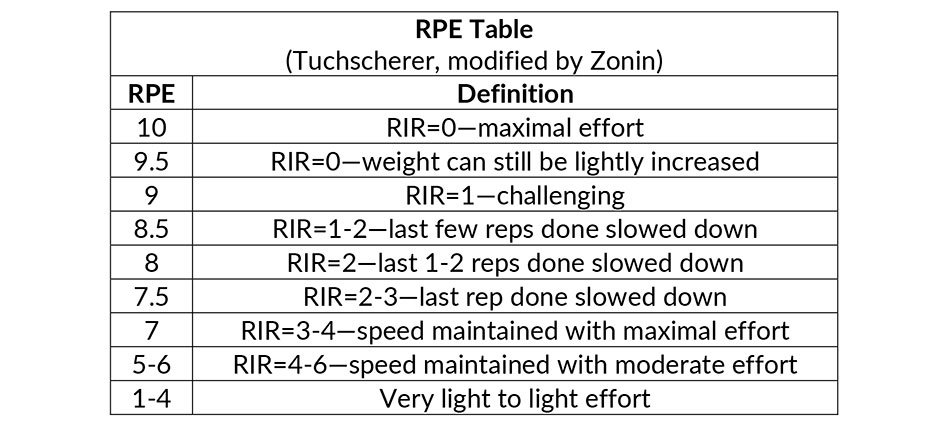
RIR Coaching vs. Coaching to Failure
In bodybuilding, it’s a frequent follow to push units till concentric failure, as it’s a frequent perception that solely the final reps of a set—probably the most strenuous ones—are people who result in outcomes.
In power coaching, alternatively, it’s common to coach with a buffer and terminate a set earlier than reaching failure.
Actually, many of the coaching quantity is accomplished at a medium effort stage (RPE=6-8 and RIR=4-2).
Solely 5-10% of the amount is executed with a excessive effort (RPE>8.5-9 and RIR=2-1) and a maximal effort (RPE=9.5-10 and RIR=0). These are often used just for testing 1RMs and making an attempt PRs, which is one thing that occurs not more than 2-3 occasions a 12 months.
A low effort (RPE<6 and RIR≥6) is used principally for gentle/energetic restoration units or classes.
Some power coaches prescribe interrupting the set earlier than method deteriorates and others cease the set as quickly because the rep pace slows down.
Soviet weightlifting coaches used to prescribe a repetition vary from 1/3 to 2/3 of the RM at a given weight.
At StrongFirst, we endorsed these tips.
However why can we need to steer clear of failure? Let me clarify utilizing two completely different eventualities.
Let’s say your 6RM for the bench press is 225lb, this implies you are able to do 6 reps at your most effort (RPE=10 and RIR=0).
State of affairs 1—All-out units
You load the bar at 225lb and do a set of 6 reps, pushing your self to the very restrict.
After a 2–3-minute relaxation, you attempt one other set with the identical weight, pushing till you may’t carry anymore. You possible gained’t full one other full set of 6, maybe reaching 4 reps.
When you preserve doing all-out units each 2-3 minutes, you’ll lose reps in every set. I can speculate that on the finish of the sport your rep depend will progress alongside these traces: 6, 4, 2, 1.
Now, let’s think about a number of issues.
You probably did 4 units and a complete of 13 reps (6+4+2+1).
Take into account the method of those reps. For many athletes, I’d estimate solely about 50%-60% have been carried out with excellent method.
Within the first set, you have been most likely capable of keep excellent method for the primary 4-5 reps.
Within the second set, the primary couple of reps have been possible excellent. By the third set, maybe solely the primary rep was excellent, and within the fourth, the one rep accomplished was most likely not.
So, you probably did 7-8 excellent reps out of 13. As I discussed, 50-60%.
As well as, I’m fairly certain that the following day, in the direction of the night, you’ll really feel sore, and the muscle soreness will final for a number of days, which signifies that you won’t be able to coach the bench press once more for a while.
State of affairs 2—Units with RIR
When you load the bar with 225lb and do 3 reps—half of your RM—after which relaxation for 2-3 minutes, it is best to have the ability to hit one other set of three reps.
I speculate that you could simply full 6 units of three reps, and almost certainly much more.
Let’s assume you probably did 6 units, which suggests a complete of 18 reps.
Now, let’s make our evaluation.
I’m certain you agree that 90-100% of those reps have been technically excellent.
As well as, you gained’t be sore the times following your session, which signifies that it is possible for you to to coach the bench press once more, even on the following day in case your plan requires it otherwise you want to take action.
The underside line is that coaching with RIR permits you to full a better quantity in a session, keep excellent method, and practice extra incessantly, which in flip permits you to practice with a better weekly or month-to-month quantity.
Guess what a better quantity with excellent method results in? Extra power positive aspects and almost certainly, extra muscle development.
Static Reps vs. Variable Reps
Along with what was mentioned above, we at StrongFirst advise various the variety of reps from set to set, staying inside 1/3 to 2/3 of the RM, typically utilizing ladders as an efficient device to handle excessive volumes and fight neural and metabolic fatigue.
Let me clarify why we accomplish that with two completely different eventualities.
Let’s say that you just loaded the bar along with your 8RM weight, and your session requires a complete quantity of 25 reps (NL=25). One-third and a couple of/3 of the RM rounded to the closest integers are 3 and 5, respectively, therefore your rep vary is 3-5.
State of affairs 1—Static reps on the top quality
You do 5 units of 5, the well-known 5×5.
State of affairs 2—Variable reps
You do the next ladder composed of 6 units: 3, 5, 4, 5, 3, 5.
Now, let’s evaluate the 2 eventualities.
The ladder results in a better variety of units to totalize the prescribed quantity. Extra units result in extra set-ups, and the significance of practising an ideal set-up as the primary prerequisite for an ideal carry is well-known.
With the ladder, although the burden and quantity are the identical, only some units are pushed to the higher finish of the rep vary, permitting you to remain more energizing all through the session and keep excellent method.
Moreover, retaining the rep depend static within the higher finish of the rep vary results in extra time underneath pressure in every set, which results in extra muscle positive aspects. Some fatigue will progressively construct up all through the session—however by no means to the purpose of resulting in failure or compromising method—and this teaches the lifter to battle underneath excessive efforts, which is a crucial prerequisite for setting PRs.
The underside line is that there are rationales that assist each static reps on the prime of the rep vary and ladders, and this is the reason we use each in response to a number of elements, together with the athlete’s ability stage and the aim of the plan.
The plan I’m about to share with you takes into consideration the ideas and concerns above however applies them in an unconventional means. If you’re prepared to interrupt your plateaus in power and muscle positive aspects, carry on studying.
The Triple-Tier Plan for Energy and Muscle Positive aspects
I’ve defined why at StrongFirst we prescribe a rep-range in response to the RM at a given weight and we often range the variety of reps inside that vary. However whereas we often do that from set to set inside a session, this plan prescribes various the reps from week to week inside 3-week cycles.
The plan lasts 12 weeks and consists of two elements: a 9-week preparation section adopted by a 3-week peaking section.
The preparation section consists of three three-week blocks. Throughout every block, you’ll preserve the amount regular. Nevertheless, the RPE will rise every week as you enhance the reps per set and scale back the whole variety of units.
When switching from one block to the following one, the RPE drops down, whereas the amount will increase noticeably (≥20%).
The three-week peaking section foresees a pointy drop within the quantity and a gradual lower of RPE, with elevated depth in the direction of the ultimate testing week.
It’s possible you’ll select to use this technique to 2 to 6 lifts, in response to your targets and the time you may dedicate to your coaching. On this article, I’ll present you how one can design a three-lift plan.

Right here’s how one can design your Triple-Tier Plan, step-by-step.
Step 1—Choose the lifts
Choose one carry for every one of many motion patterns and enter them into your weekly schedule.
Instance:

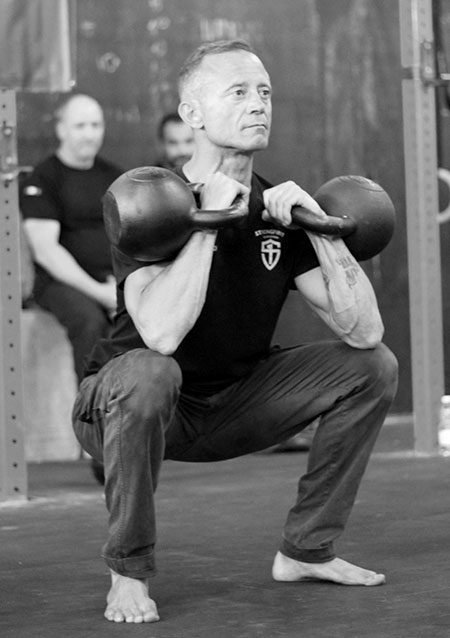
Step 2—Discover your coaching weights
You’ll practice every carry at three completely different intensities, heavy, medium, and light-weight. To determine what’s heavy, medium, and light-weight, you’ll use particular RM ranges.
The desk beneath outlines what heavy, medium, and light-weight shall be for you by way of RM ranges.

In response to the desk above, you’ll choose the next 4 weights for every carry:
- One weight that permits you to full 1-3 excellent reps.
- One weight that permits you to full 4-7 excellent reps.
- One weight that permits you to full 8-11 excellent reps.
- One weight that permits you to full 12-15 excellent reps.
Please take the time to check your actual RM with every weight, as it will likely be essential for assigning the right coaching parameters to your plan.
This plan depends on correct rep counts primarily based in your RMs. Guesswork may result in miscalculations, rendering your classes too gentle or too robust.
Therefore, deciding on the suitable weights, and precisely testing your RMs, is your floor zero for this plan.
Instance:
You possibly can full one excellent rep of double kettlebell army press with a pair of 36kg kettlebells and resolve to check your RMs with a pair of 32s, 28s, and 24s. Beneath are your outcomes:
- 36kg x 1RM
- 32kg x 4 reps
- 28kg x 8 reps
- 24kg x 15 reps
Step 3—Set up your rep counts
After getting established your coaching weights and examined your RMs, use the desk beneath to determine your rep depend for every week and depth for the preparation and the peaking phases.
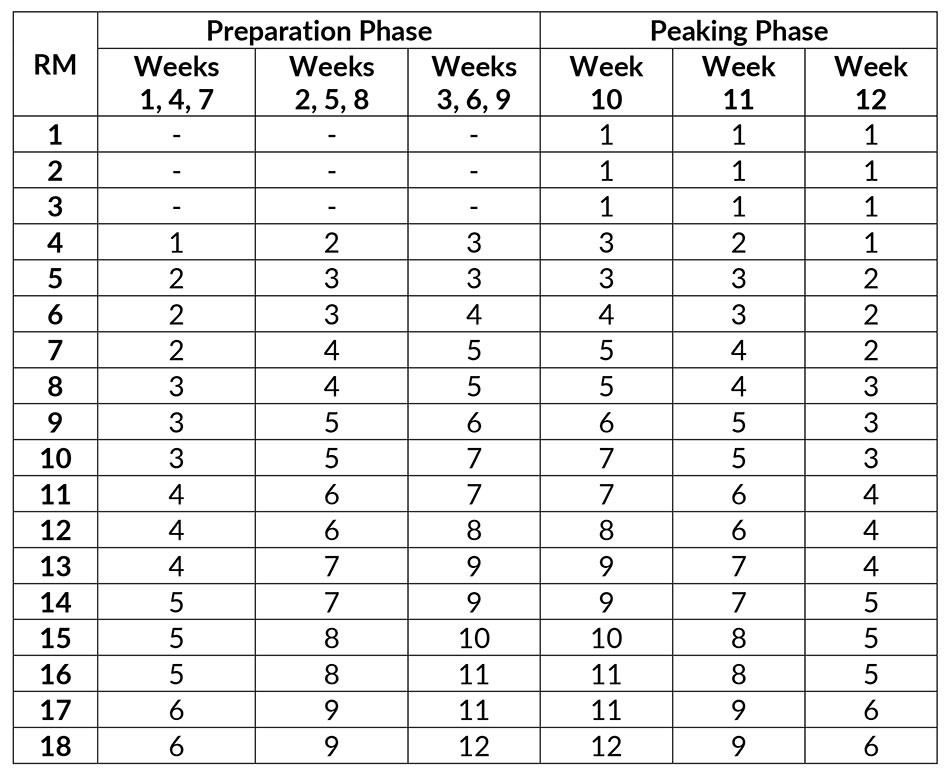
Instance:
Let’s persist with the earlier instance of the double kettlebell army press. The rep counts are as follows:
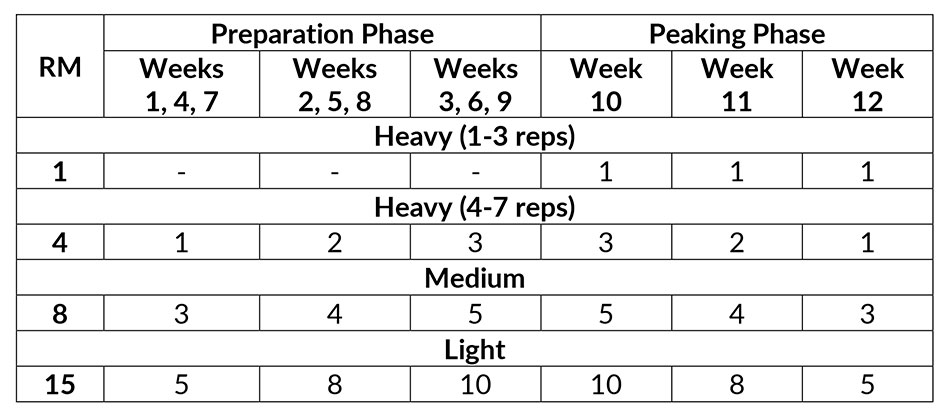
Step 4—Set up your development
The desk beneath illustrates the amount to be totalized every week per every depth.

Now that you recognize your coaching weights, your rep counts, and the weekly volumes, you might be in possession of all the weather you have to set up your development. Let’s see the way it works by way of two examples, the primary protecting the preparation section and the second protecting the peaking section.
Instance:
As soon as once more, we’ll persist with the earlier instance of the double kettlebell army press. Let’s see how your coaching schedule appears to be like like throughout the preparation section.
Session A calls to your heavy day, and you’ll do the next:
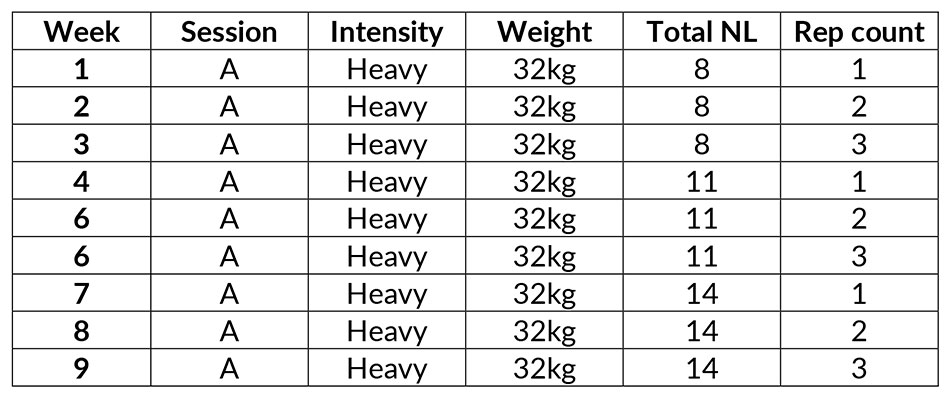
- On week 1 you’ll do 8 singles.
- On week 2 you’ll do 4 units of two reps.
- On week 3 you’ll do 2 units of three reps, adopted by a double.
- On week 4 you’ll do 11 singles.
- …and so forth and so forth.
Notice that it’ll not all the time be doable to finish the prescribed quantity with the prescribed rep depend, and therefore the final set could have a decrease rep depend.
Session B calls to your gentle day, and you’ll do the next:
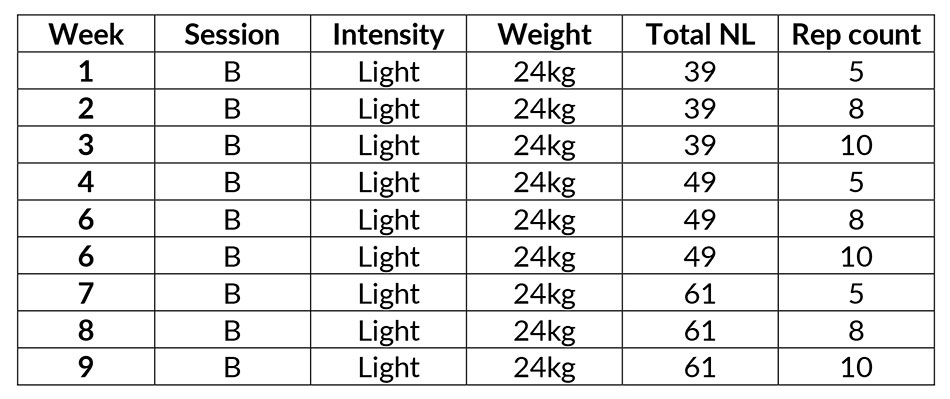
- On week 1 you’ll do 7 units of 5 reps, adopted by a set of 4 reps.
- On week 2 you’ll do 4 units of 8 reps, adopted by a set of seven reps.
- On week 3 you’ll do 3 units of 10 reps, adopted by a set of 9 reps.
- On week 4 you’ll do 9 units of 5 reps, adopted by a set of 4 reps.
- …and so forth and so forth.
Session C calls to your medium day, and you’ll do the next:
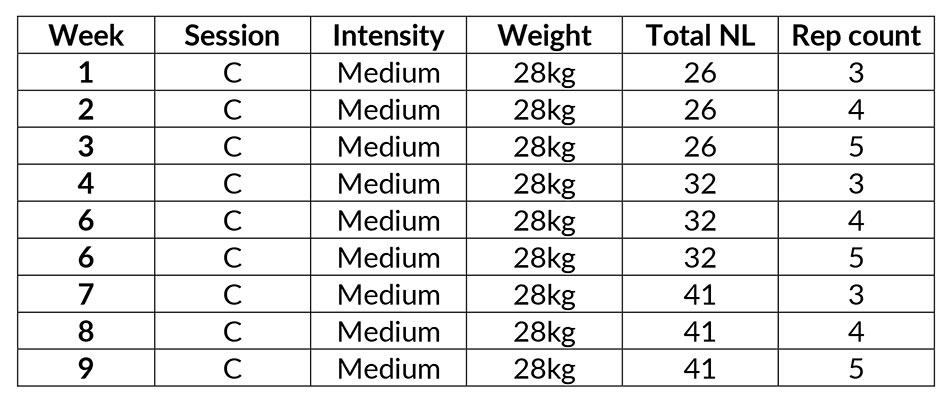
- On week 1 you’ll do 8 units of three reps, adopted by a double.
- On week 2 you’ll do 6 units of 4 reps, adopted by a double.
- On week 3 you’ll do 5 units of 5 reps, adopted by a single.
- On week 4 you’ll do 10 units of three reps, adopted by a double.
- …and so forth and so forth.
As you may see, whereas in every 3-week block the amount stays fixed, the RPE will increase from week to week, along with the variety of reps per set. Throughout the block the rise within the RPE is counterbalanced by a discount of the variety of units.
The amount will increase from block to dam throughout the 9-week preparation section.
Issues change within the 3-week peaking section during which the amount drops down dramatically in comparison with the earlier block.
Throughout this ultimate block the amount stays principally fixed, whereas the RPE decreases from week to week, along with the variety of reps per set. Additionally, some singles with the 1-3RM heavier weight are launched.
The drop in quantity and RPE, along with the elevated common depth induced by the introduction of the heavy singles, units the muse for a profitable ultimate check.
You will have a number of choices for the ultimate check. It’s possible you’ll both:
- Attempt to set a brand new 1RM/PR.
- Take a look at your RM with the 1-3RM weight and assess its enhance.
- A mixture of 1 and a couple of. As soon as examined the 1RM, take a beneficiant relaxation (ideally 10 minutes) after which check your RM along with your 1-3RM weight.
Instance:
Persevering with to stay with the earlier instance, let’s see how your coaching schedule appears to be like throughout the peaking section.
Session A calls to your heavy day, and you’ll do the next:

- On week 10 you’ll do one triple with 32kg, one single with 36kg, and a double with 32kg.
- On week 11 you’ll do one double with 32kg, two singles with 36kg, and a double with 32kg.
- On week 12 you’ll do one double with 32kg, after which check your 1RM, RM, or each.
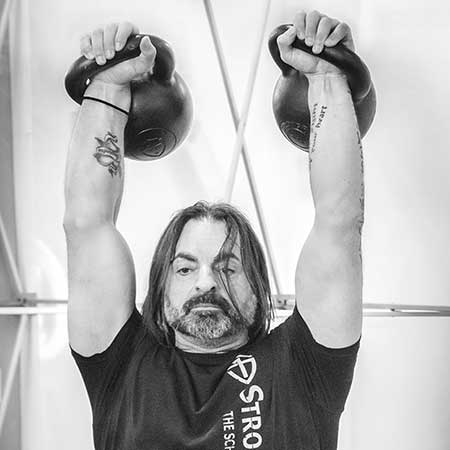
Notice that the perfect technique for this section is to begin your session with one set with the 4-7RM weight, then do the prescribed singles (or the check) along with your 1-3RM weight, and eventually swap again to the 4-7RM weight and do as many units as obligatory to finish the prescribed quantity.
Session B calls to your gentle day, and you’ll do the next:

- On week 10 you’ll do 2 units of 10 reps, adopted by a set of seven reps.
- On week 11 you’ll do 3 units of 8 reps, adopted by a set of three reps.
- On week 12 you’ll do 5 units of 5 reps, adopted by a set of three reps.
Session C calls to your medium day, and you’ll do the next:

- On week 10 you’ll do 3 units of 5 reps, adopted by a double.
- On week 11 you’ll do 4 units of 4 reps, adopted by a single.
- On week 12 you’ll do 5 units of three reps, adopted by a double.
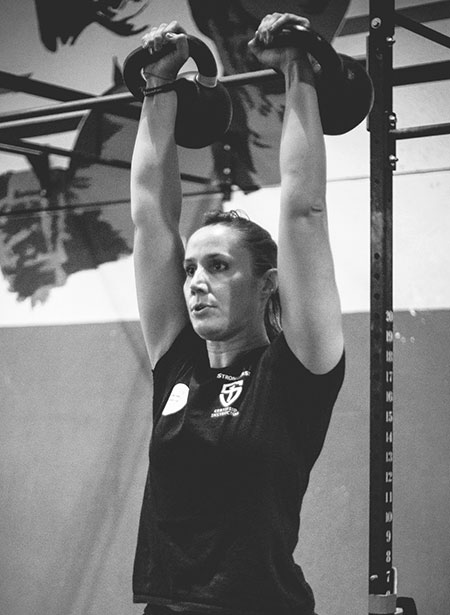
Conclusion
The Triple-Tier Plan emerged from my deep dive into analysis and sensible trials to evolve our Plan Strong™ and Built Strong seminar curriculums. Whereas this plan is distinct from our seminar choices, it’s wealthy with pivotal insights—comparable to nuanced purposes of RPE, RIR, and strategies for modulating coaching depth—that we’ll incorporate into our up to date seminar supplies.
You’ll additionally discover new ideas comparable to Relative Effort and Common Relative Effort, together with progressive weekly coaching layouts.
I’m excited to ask you to affix the upcoming Plan Strong™ and Built Strong seminars this April and Might. It’s the proper area to familiarize your self with these progressive methods and apply them to attain peak outcomes for you and your college students.
And for these of you who’ve been with us earlier than, keep in mind that the Loyal Alumni Value is there for you, providing a considerable 50% off as a thanks to your continued dedication.
I’m at present deep into the Triple-Tier Plan alongside my coaching associate, in addition to the chums and colleagues who’ve enthusiastically participated in these “coaching experiments” of mine. Do you have to select to embrace this plan and implement it along with your college students, I’m keen to listen to about your experiences. Your suggestions shouldn’t be solely welcome however invaluable—it’s the driving pressure that shapes our steady enchancment.
Energy to you—and right here’s to advancing collectively in power and ability!
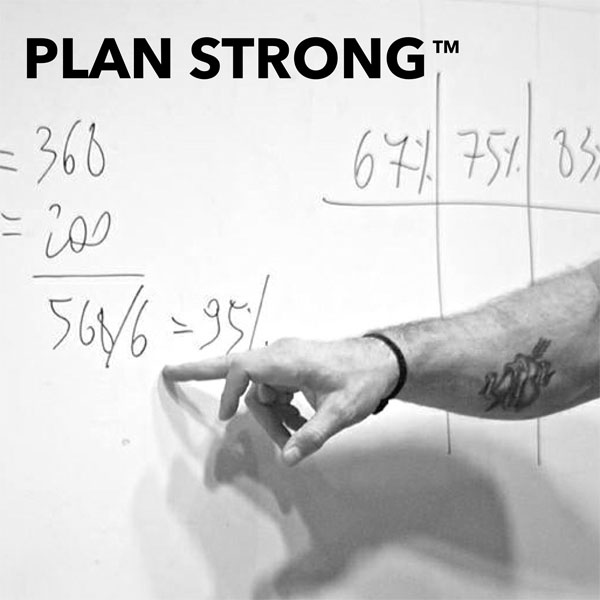

Don’t miss our on-line seminars with Fabio Zonin:
Built Strong—November 16-17, 2024
